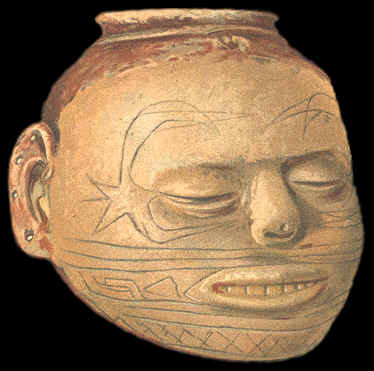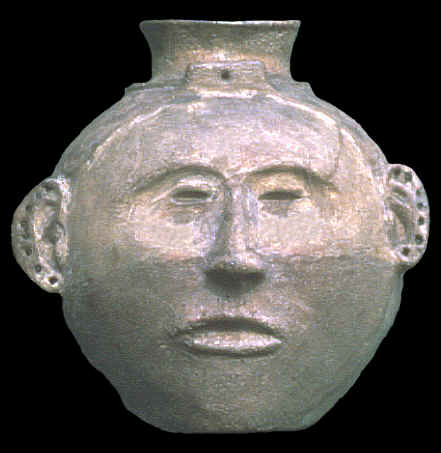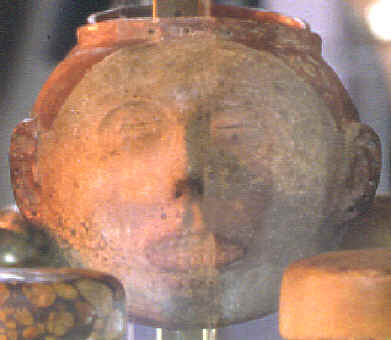|
|
|
Late Mississippian human head effigies are rare. In 1968 Lawrence Mills reports that he has located and described 63 examples. Previous to his study, 59 examples had been reported. |
|
|
|
|
Head pots were made into many different shapes and designs. Mills divides them into two basic classifications, Type-A and Type-B. Type-A are vessel forms that have human facial features added to the surface. Type B are vessels that were made in the shape of a human head. Mills describes three sub-types within the Type-A group. Sub-type 1 have long necks, annular bases and facial features in low relief. Sub-type 2 have short necks, modeled faces and they may have faces on the front and back (Janus form). Sub-type 3 are globular in form, they have a small opening, a flaring lip and modeled base. Mills does not describe a sub-type for Type-B vessels. |
|
|
|
|
"Head pots" range in size from 3 inches (7.6 cm) to 9 1/4 inches (23.5 cm) high. The majority of them are between 6 inches (15.2 cm) and 8 inches (23 cm) high. |
|
|
|
|
Mills's survey of head vases lists the Arkansas Counties of Mississippi, Cross and Crittenden and the Missouri Counties of Scott, Mississippi and New Madrid as the central distribution area for "head pots." Forty four of the 63 examples he recorded came from within a hundred mile radius of this area. All of the "head pots" in his study, except for two examples, were found within a 200 mile radius. |
|
| CONTINUE ON TO PAGE THREE | |
|
"REFERENCES"
1903,
Holmes, W. H., "Aboriginal Pottery of the Eastern United
States," "20th Annual Report, Bureau of American
Ethnology," pp. 96-98. |
|



